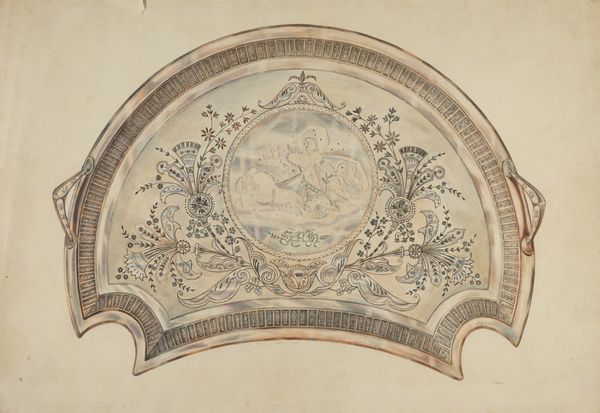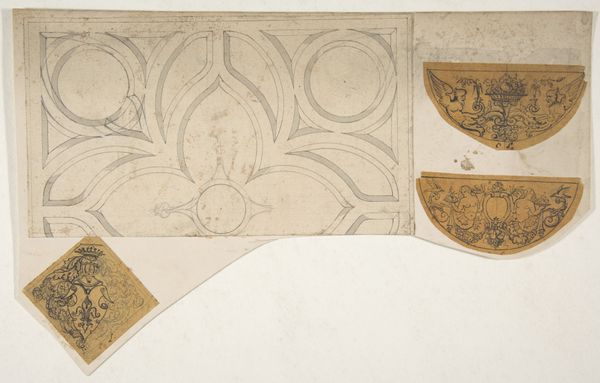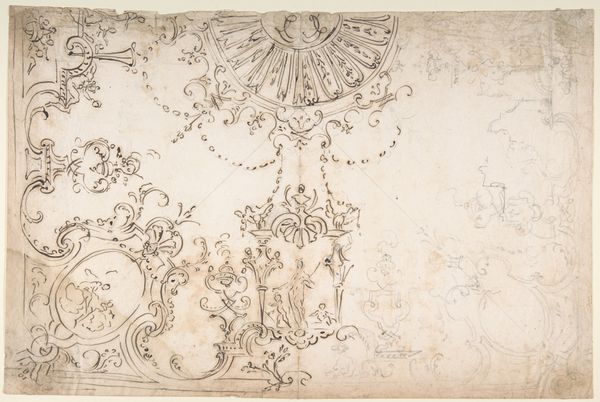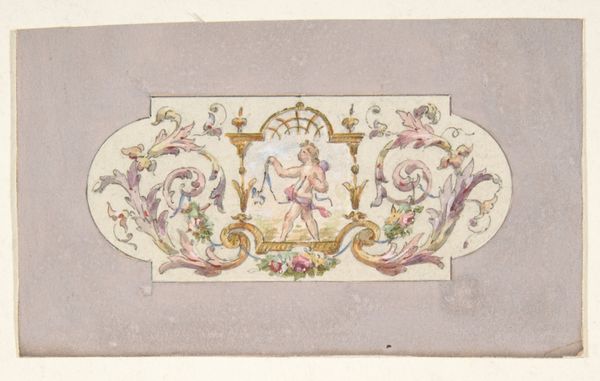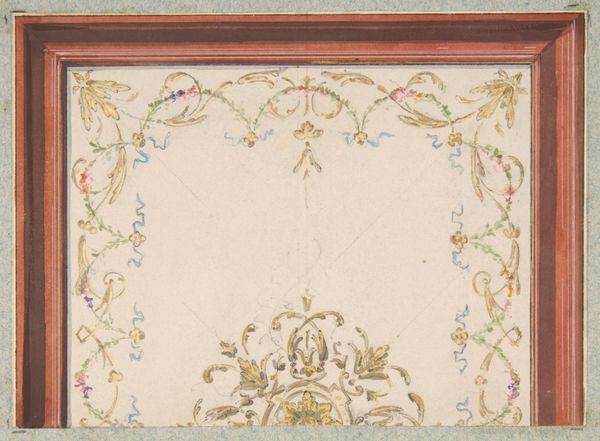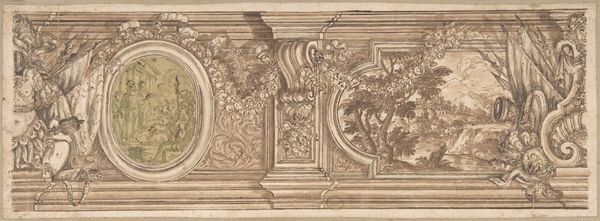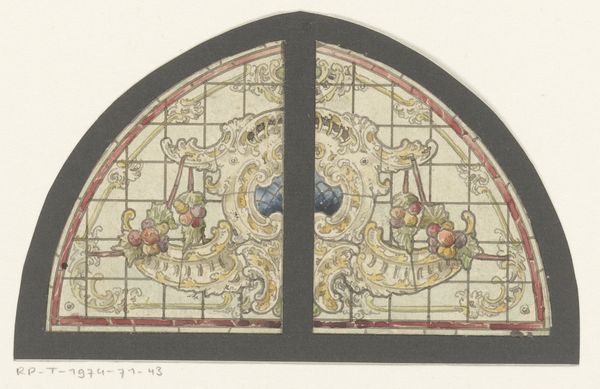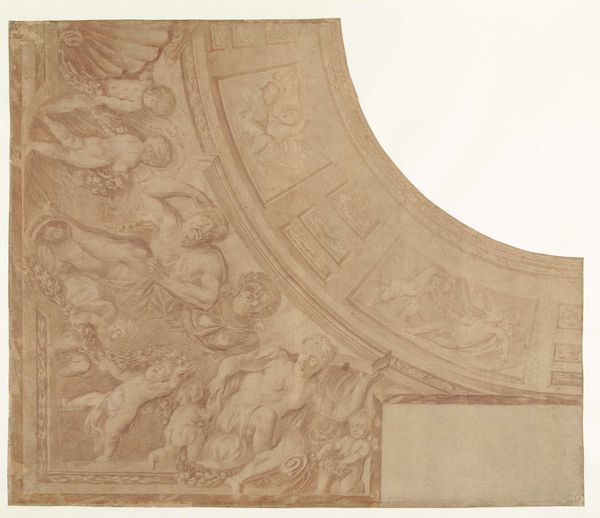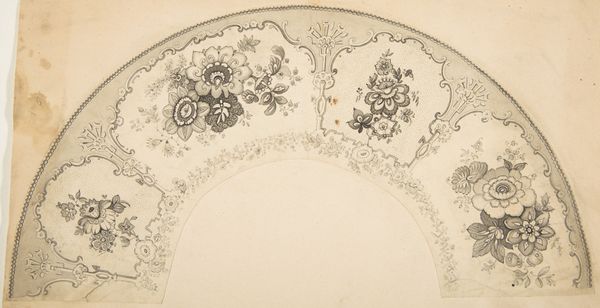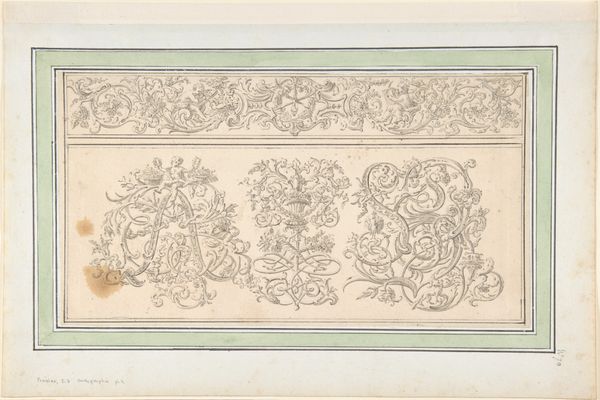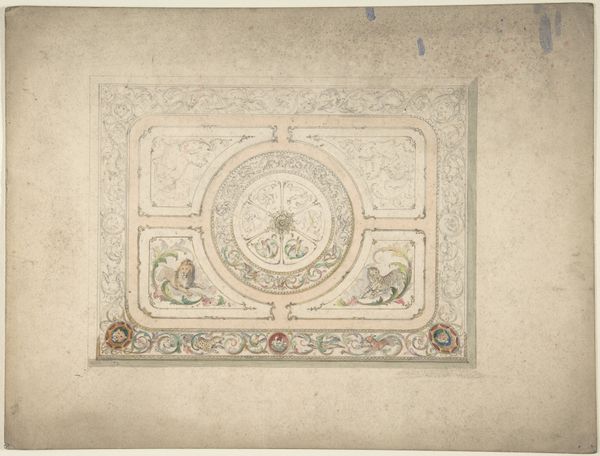
Partial design for a circular ceiling decoration 1830 - 1897
0:00
0:00
drawing, watercolor, architecture
#
drawing
#
watercolor
#
decorative-art
#
watercolor
#
architecture
Copyright: Public Domain
Editor: So, here we have Jules Lachaise's "Partial design for a circular ceiling decoration," created sometime between 1830 and 1897, using watercolor and drawing techniques. It has a certain delicate, unfinished quality, doesn’t it? What jumps out at you about this fragment? Curator: Immediately, I'm drawn to consider the labor and skill invested in producing decorative arts during this period. Notice the fine linework and precise watercolor washes – each flourish speaks to hours of painstaking craftsmanship. How does the act of meticulously rendering this design for a ceiling, a space typically experienced passively, influence your perception of the artwork's value? Editor: That’s interesting. I hadn’t thought about the contrast between the effort involved and how passively it's meant to be viewed. Does the medium—watercolor on paper—suggest anything about its intended purpose, perhaps as a study or proposal? Curator: Exactly. Watercolors were frequently employed for preparatory sketches and designs. This particular piece allows us to consider the relationship between 'high' art and the more practical, often overlooked, world of design and decoration. Think about the social context: who commissioned such pieces, and what kind of labor would have been involved in the actual execution of this design on a grander scale, on an actual ceiling? What does it say about their status, and also the aspirations of those who contracted that kind of work? Editor: That shifts my focus to the economic realities embedded within even these seemingly delicate designs. It wasn’t just about aesthetics, but also about the patronage system. Curator: Precisely. And by understanding that, we gain a richer appreciation not just for the beauty, but also the complex networks of production and consumption that shaped its creation and use. Editor: It makes you see beyond the surface elegance, understanding art as more than just beauty, but something deeply tied to its socio-economic moment. Curator: Indeed. Examining its materiality and the process unveils deeper insights into history.
Comments
No comments
Be the first to comment and join the conversation on the ultimate creative platform.
